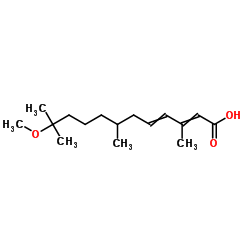| Structure | Name/CAS No. | Articles |
|---|---|---|
 |
Retinoic acid
CAS:302-79-4 |
|
 |
TTNPB
CAS:71441-28-6 |
|
 |
Methoprene acid
CAS:53092-52-7 |